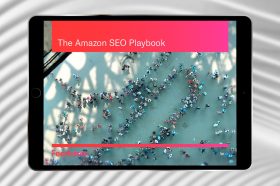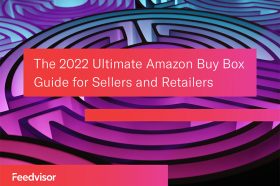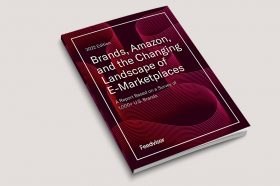Resources - Blog
7 Tips for Cutting Costs With Your FBA Inventory and Shipments

Amazon’s distribution network is far-reaching and ever-expanding. In the U.S. alone, it reportedly has 128 storage centers totaling close to 100 million square feet of space. It’s also said to have a $1.5 billion international airport and an estimated 34 million more square feet of space in the works.
Through this network, Amazon can shuttle products to fulfillment centers all over the United States and drastically shorten shipping times to customers. Unfortunately, for FBA sellers, this customer-focus can cut into profit margins when it comes to shipping inventory. Shipments are sometimes split up and sent to fulfillment centers thousands of miles away.
The good news is sellers do not always need to sell more to elevate profits; you can also cut costs. In this post, we give you seven tips for optimizing your FBA inventory and shipments so that you can save money.
Notable FBA Inventory and Shipment Settings
Notable FBA Inventory and Shipment Settings
Stay on top of the latest e-commerce and marketplace trends.
1. Stickerless Commingling
Amazon’s default inventory setting is to commingle the same products together from a manufacturer. That means if you are selling the exact same product as other retailers or sellers, your inventory will be mixed with theirs. Amazon simply scans the UPC or EAC code for each product rather than an FNSKU label.
Intended to save time, the setting frees sellers from labeling each product before sending it to Amazon. For Amazon, it also saves time processing at a fulfillment center and allows them to more quickly put that inventory into circulation for customer orders. Once processed, Amazon can also pull stock from whichever fulfillment center is closest to the customer, rather than sourcing from a center with a specific seller’s inventory.
To note, not all items listed on Amazon are eligible for stickerless commingled inventory, so those would not be set by default. Amazon holds the right to alter these requirements or eligibility of an item without prior notification.
The requirements for items to qualify for commingling are as follows:
- Items must be in mint condition. No damaged, gently used, or open packages are acceptable.
- Items must qualify as “evergreen items,” meaning there is no expiration limitation on the item.
- Each item must have a clear barcode that can be scanned. An EAN or UPC code must also be present on the item, and this barcode must be applicable only to an individual ASIN.
- Media items (including DVDs, VHS, CDs, software, and video games) do not qualify for this service.
The Issue
Reputable large-scale Amazon sellers and retailers should be wary of commingling. Less reputable sellers send knock-off products to Amazon, which are then pooled with legitimate products. As a result, all sellers end up being vulnerable to accusations of fraud and account suspensions.
For instance, a customer buying a Nike t-shirt through a reputable seller’s store might receive a counterfeit product from the commingled inventory. If that happens, that seller is then on the hook. The original seller that first sent in the counterfeit to Amazon is not. For that reason, many FBA sellers opt to not participate in commingling.
To avoid this issue, you want to change your default barcode preference settings. This change will apply to all new products. If you have already sold some products as commingled, the barcode change will not affect those. You will either need to change the barcode preference for each of those products individually or create a new FNKSU for that product. Going forward, your products will need to be sent with that FNSKU label so each will be directly linked to your inventory. To note, Amazon will still sell your other commingled inventory, if you do not change the barcode preference.
Commingling is not an issue for private label businesses, since they are selling their own products. It only might become one if a reseller offers your products without your knowledge.
2. Distributed Inventory Placement
Distributed Inventory Placement is the default shipment setting in Amazon. Through this setting, Amazon will decide where all of your case-packed or individually-packed SKUs should go. With individually-packed SKUs, Amazon is more likely to split your shipments up into multiple boxes and send each box to a different fulfillment center.
Amazon prefers not to split up shipments with case-packed items but it might. Since there is a limit of 150 items per case, trying to ship any more than this amount in one box will guarantee that your shipment will at least be split up into different boxes.
Also, even if your shipment is not split up initially, Amazon might collect your shipment at one receiving center and then send it to other fulfillment centers. This process can drag out the time your inventory shows as in stock. To prevent lag, you might consider shipping case-packs sooner rather than waiting for inventory to get low.
3. Inventory Placement
Sellers can also opt to send their shipments of inventory to one fulfillment center. Known as Inventory Placement, this setting simplifies the shipping process; however, once Amazon receives a shipment, they will likely send your products to different fulfillment centers. Since your inventory is sent out again, your stock might not be immediately available for purchase. Naturally, you might want to ship inventory earlier than usual to minimize delays. To note, this service comes with an added cost per item that’s in each box. Those costs are the following:
Standard Sized Items
- $0.30 for items that are 1 lb. or less
- $0.40 for items that are 1-2 lb.
- $0.40 for items over 2 lb. plus $0.10/lb. above the first 2 lb.
Oversized Items
- $1.30 for items that are 5 lb. or less
- $1.30 for items over 5 lb. plus $0.20/lb. above the first 5 lb.
There are also a few product exceptions for Inventory Placement. Items in the following categories may be directed to a different receive center or fulfillment center even if you use the Inventory Placement Service:
- Apparel
- Jewelry
- Shoes
- Media
- Commingled inventory
- Oversize items
- Items with Amazon prep required
- Items with Amazon labeling required
- Hazardous materials
To note, Amazon reevaluates where to send each new shipment and will change the destination. As a result, sellers cannot reliably predict the cost of replenishing inventory if using this option. To truly take advantage of Inventory Placement, you will need to conduct a cost-benefit analysis and figure out which setting saves you the most money for each shipment. In fact, many sellers do.
4. Shipping Method and Carrier
Depending on the size of inventory to send, your general shipping method will either be small parcel delivery (SPD) or less than truckload (LTL). In either case, you will likely want to go with an Amazon-partnered carrier to receive deeply discounted rates.
When it comes to small parcel delivery, you should always get an estimate on the price of your shipment with each partnered carrier. You may notice that UPS is cheaper than FedEx or vice versa. Shipping weight and distance do tend to influence your shipment costs; however, it’s not always the case that the heavier the package, the more you save. The more you ship, the more you will notice anomalies to the conventional wisdom often proclaimed across the Internet.
LTL shipping tends to offer massive cost-savings; however, it’s intended for high-volume sellers. To use it, your shipment must weigh at least 150 lb., contain no more than 4,999 boxes, and be properly packaged on a pallet. For shipments of this size, LTL is normally more cost-effective than sending many small boxes via SPD. It also tends to get cheaper as you increase the weight or density of your shipment. In other words, your cost per pound will be lower.
LTL shipments can be complicated to arrange and Amazon may take slightly longer to process your inventory.
As always, you want to be certain that this shipment method is the most cost-effective for you. To do so, you should get an estimate of LTL versus SPD before you ship out your inventory.
5. FBA Prep Services
FBA prep services are another avenue of possible cost savings. You may want to investigate whether it makes sense to have a third-party company receive your inventory, prepare it for FBA, and ship it to Amazon. Amazon also offers this service, but you will still need to ship your products to them. In either case, you are charged a fee per item to properly package inventory for FBA fulfillment.
These services can be cost-effective in a variety of ways. For private label sellers, inventory normally arrives from China at a port of entry in the United States. By finding a prep service nearby a port, you can possibly reduce trucking costs to move your inventory and leverage their personnel to quality assure your products. To note, if they do not offer quality assurance, you run the huge risk of never actually seeing the inventory that you are sending to Amazon.
In a similar fashion, retailers or sellers can arrange for their inventory to be sent from a brand’s distribution warehouse to a nearby FBA prep service. Similarly, this decision could very well save significant time and money on shipping.
Some third-party FBA prep services also allow sellers to store inventory at their warehouse. Since many resellers do not have their own warehouses, this options can remove the clutter and complication of receiving inventory.
No matter the general benefits, sellers must stay ever-attuned to whether these services cost-effectively add to the bottom line or not.
6. Shipping Directly From a Manufacturer in China to Amazon FBA
Some large FBA private label sellers ship directly from a manufacturer’s facility in China to Amazon. Done correctly, this option can probably save you the most time and money. This process requires that you have your products quality assured in China, have your supplier or another third-party service prep them for FBA there, and then successfully ship them through Chinese and U.S. customs to their final destination. While that discussion falls slightly outside of the scope of this post, we have given sellers a starting point for research here. No matter where you are in your seller journey, this option is worth investigating as a cost-effective means of scaling up your business.
7. On FBA Shipment Hacks
Finding shipping hacks seems to be all the rage among sellers. In the past, those hacks have included changing the return address of shipments or creating shipments then deleting them and then creating them again with a slight tweak. Whether the hacks are to consistently send inventory to the same fulfillment center or to reduce split shipments, Amazon will eventually create a policy that negates them. If you heavily depend on a hack that violates or bends Amazon’s rules, your future success might be at risk. Overall, you want to find tactics and methods that are sustainable for longer-term business growth rather than short-term gains.
Conclusion
Through these seven tips, FBA sellers actually have shipping and inventory options that can save money and elevate profitability. As Amazon expands its distribution network, you will want to efficiently maximize these options so that your business is not entirely dependent on selling more to grow. You will also want to stay ahead of any new policies, third-party options, and trends in your business so that you can adapt in an ever-changing market.
Learn what Feedvisor can do for your business.
When you partner with Feedvisor, you automatically receive access to our true, AI-driven technology and hands-on team of e-commerce experts. Contact one of our team members today to learn more about our end-to-end solution for brands and large sellers on Amazon, Walmart, and e-marketplaces.




